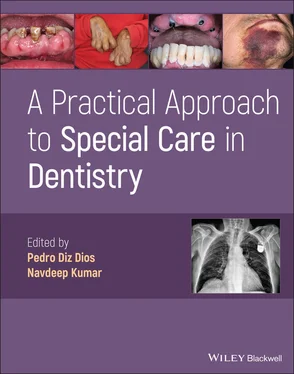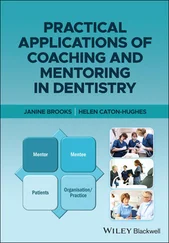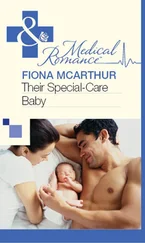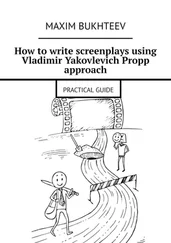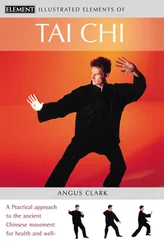A Practical Approach to Special Care in Dentistry
Здесь есть возможность читать онлайн «A Practical Approach to Special Care in Dentistry» — ознакомительный отрывок электронной книги совершенно бесплатно, а после прочтения отрывка купить полную версию. В некоторых случаях можно слушать аудио, скачать через торрент в формате fb2 и присутствует краткое содержание. Жанр: unrecognised, на английском языке. Описание произведения, (предисловие) а так же отзывы посетителей доступны на портале библиотеки ЛибКат.
- Название:A Practical Approach to Special Care in Dentistry
- Автор:
- Жанр:
- Год:неизвестен
- ISBN:нет данных
- Рейтинг книги:3 / 5. Голосов: 1
-
Избранное:Добавить в избранное
- Отзывы:
-
Ваша оценка:
- 60
- 1
- 2
- 3
- 4
- 5
A Practical Approach to Special Care in Dentistry: краткое содержание, описание и аннотация
Предлагаем к чтению аннотацию, описание, краткое содержание или предисловие (зависит от того, что написал сам автор книги «A Practical Approach to Special Care in Dentistry»). Если вы не нашли необходимую информацию о книге — напишите в комментариях, мы постараемся отыскать её.
Learn to treat dental patients with disabilities or who are medically compromised A Practical Approach to Special Care in Dentistry
A Practical Approach to Special Care in Dentistry
A Practical Approach to Special Care in Dentistry — читать онлайн ознакомительный отрывок
Ниже представлен текст книги, разбитый по страницам. Система сохранения места последней прочитанной страницы, позволяет с удобством читать онлайн бесплатно книгу «A Practical Approach to Special Care in Dentistry», без необходимости каждый раз заново искать на чём Вы остановились. Поставьте закладку, и сможете в любой момент перейти на страницу, на которой закончили чтение.
Интервал:
Закладка:
Medical History
Graves disease/hyperthyroidism diagnosed 4 weeks ago
Atrial fibrillation – detected at the same time as the hyperthyroidism
Gastro‐oesophageal reflux disease
Medications
Propylthiouracil
Dabigatran
Omeprazole
Dental History
Irregular attender; only attends if there are dental problems
Good co‐operation; history of multiple fillings and dental extractions
Brushes twice a day using hard bristle toothbrush to remove the staining
Highly cariogenic diet, including consumption of tea with 3 spoons of sugar 4–6 times a day
Likes to chew/suck on citrus fruits
Also began eating black grapes several times a day since commencing propylthiouracil as she found this helpful with her symptoms of nausea
Social History
Widowed housewife
Lives with eldest daughter who works as a secondary school teacher and is responsible for transportation
No alcohol or tobacco consumption
Oral Examination
Mild goitre ( Figure 5.3.1)
Generalised pitted hypoplastic enamel and staining present on buccal surfaces of teeth ( Figure 5.3.2) Figure 5.3.1 Mild goitre (anterior and lateral view). Figure 5.3.2 Pitted hypoplastic enamel and staining present on buccal surfaces of the anterior teeth. Figure 5.3.3 Generalised moderate to severe tooth surface loss on the palatal and occlusal surfaces of the maxillary dentition.
Generalised moderate to several tooth surface loss (erosion and attrition) with possible pulpal involvement of #11 ( Figure 5.3.3)
Temporary filling in situ #15
Caries in teeth #17, #14 and #45
Supragingival calculus present on the lingual surfaces of the lower incisors
Generalised gingival recession
Missing (due to extraction) teeth #16, #24, #36 and #37
Radiological Examination
Orthopantomogram and long cone periapical radiograph #15 undertaken ( Figures 5.3.4and 5.3.5)
Generalised bone loss (~60–70%)
Patchy medullary radiolucency suggestive of osteopenia/osteoporosis
Periapical radiolucency associated with the apex of tooth #15
Structured Learning
1 What is ‘goitre’ and how does it affect your dental planning?Goitre is an enlarged thyroid gland which causes a swelling in the front of the neck that moves up and down on swallowingThyroid function can be normal (euthyroid), which requires regular monitoring, or hyperactive (hyperthyroid)/hypoactive (hypothyroid), which both require active treatmentThe impact on dental planning is dependent on any associated abnormal thyroid function and complications associated with the enlargement (e.g. respiratory obstruction, cough, voice changes, dyspnoea, tracheal deviation or dysphagia)
2 The patient believes that the appearance of her teeth has worsened due to hyperthyroidism. Is she correct?No – she has enamel pitting; this is a form of enamel hypoplasia which would have been caused at the developmental enamel matrix formation stage of the teeth Figure 5.3.4 Orthopantomogram demonstrating patchy medullary radiolucency suggestive of osteopenia/osteoporosis. Figure 5.3.5 Long cone periapical radiograph demonstrating periapical radiolucency associated with the apex of tooth #15.Defects are divided into 4 categories: pit‐form, plane‐form, linear‐form, and localised enamel hypoplasiaCauses may include nutritional factors (malnutrition), some diseases (such as undiagnosed and untreated coeliac disease), hypocalcaemia, infection, abnormalities in amelogenesisSecondary staining (likely to be linked to increased daily consumption of black grapes) may have made the pitting more noticeable
3 What factors are likely to have contributed to the tooth surface loss?Erosion: gastro‐oesophageal reflux disease; dietary – highly acidic/citrus fruits; nausea/vomiting due to propylthiouracilAbrasion: use of a hard toothbrushAttrition: reduced occlusal table due to multiple missing teeth
4 The patient is also concerned about persistent pain from the #15 and wants it extracted at the same appointment. What risk is associated with the propylthiouracil medication?Propylthiouracil has anti‐vitamin K activity and can cause hypoprothrombinaemia, leading to an increased risk of bleedingFurthermore, it is a thionamide and hence may cause a rare reaction of agranulocytosis (0.5% of patients) that can result in oral infections and inadequate wound healing
5 What additional risks associated with hyperthyroidism should be considered when planning extraction of the #15?The patient's hyperthyroidism is unlikely to be controlled as the diagnosis/treatment was relatively recent; it is preferable to consider initial pain/infection control using medication until the physician confirms the patient is stableHeightened patient anxiety and irritability likelyElevated blood pressure and heart rate due to the effects of thyroid hormone on sympathetic nervous system activityPatients with high arteriolar pressures may also require increased attention and a longer duration of local pressure to stop bleedingSympathetic overactivity may lead to faintingA thyroid storm may be provoked during dental treatment by the stress, administration of epinephrine, infection or traumatic surgery
6 What other factors do you need to consider in your risk assessment?SocialReliance on daughter (who works as a school teacher) for transport/to attend appointmentsMedicalRisk of cardiac arrythmiasAdditional bleeding risk associated with dabigatran (see Chapter 10.4)Gastro‐oesophageal reflux disease may be associated with positional limitationsDentalPoor oral health and irregular attenderAdvanced tooth surface lossPartially edentateOsteoporotic changes in the jaw bone secondary to hyperthyroidism
7 The patient requests dental implants to replace the missing teeth. What are the associated risks you should discuss?Poor oral health needs to be stabilised firstCompliance and need for regular dental visits and maintenanceBleeding riskInfection riskOsteoporotic changes in the mandible
General Dental Considerations
Oral Findings
Early tooth eruption and exfoliation of primary teeth
Alveolar bone osteoporosis
Increased caries and periodontal disease (due to high sugar intake to satisfy caloric requirement)
Ectopic thyroid tissue located on the foramen caecum of the tongue is called lingual thyroid, and in some cases may be the only active thyroid tissue present
Propylthiouracil/carbamizole may cause agranulocytosis, which may result in oral or oropharyngeal ulceration
Dental Management
Treatment should be modified based on the severity of the condition, the medical management in place and the invasiveness of the proposed dental intervention ( Table 5.3.1) Table 5.3.1 Dental management considerations.Risk assessmentThese patients may have heightened anxiety and irritabilitySympathetic overactivity may lead to faintingA thyroid storm may be provoked during dental treatment by the stress, or by epinephrine, infection or traumatic surgeryBleeding tendency in patients on propylthiouracilRisk of lymphopenia in patients on propylthiouracilCarbimazole occasionally leads to agranulocytosis, which may cause oral or oropharyngeal ulcerationAlveolar bone osteoporosis may be presentCriteria for referralControlled hyperthyroidism: depending on the comorbidities, dental care can be provided in the local dental clinic settingUncontrolled hyperthyroidism: delay elective dental treatment until the hyperthyroidism has been controlled; if urgent procedures are required, a hospital setting is preferableAccess/positionIf goitre is present, there may be pressure on the airway; consider a semi‐reclined position if this is the caseIf there is a bleeding/infection risk, arrange appointments earlier in the day and weekCommunicationLiaise with endocrinologist/physician if considering urgent dental treatment in a patient with untreated/significant hyperthyroidismSpeech may be affected if there is goitre or if there is any damage to the laryngeal nerves following surgeryConsent/capacityConsider the impact of heightened anxiety on decision making and consentPatients should be warned of the potential local (e.g. bleeding) and systemic complications (thyroid storm)Anaesthesia/sedationLocal anaesthesiaThe risks of giving epinephrine‐containing local anaesthetics in moderate amounts are more theoretical than realIf there is concern, prilocaine with felypressin can be given, but is not known to be saferSedationSedation may be considered since anxiety may precipitate a thyroid crisisNitrous oxide, which is rapidly controllable, is probably safest for dental sedationBenzodiazepines may potentiate antithyroid drugs and are thus contraindicatedAntihistamines such as hydroxyzine may also be usefulGeneral anaesthesiaThe hyperthyroid patient is especially at risk from general anaesthesia because of the risk of precipitating dangerous arrhythmiasAfter hyperthyroidism treatment, the patient is at risk from hypothyroidism; this must be borne in mind if a general anaesthesia is requiredDental treatmentBeforeBehavioural control and techniques to control anxiety are essential in patients with untreated hyperthyroidism requiring urgent dental treatmentDefinitive dental treatment should be delayed until the patient has been rendered euthyroidInvasive/surgical treatment will require specialised medical adviceDuringThe use of topical anaesthesia prior to the local anaesthesia may help pain control and anxietyLocal anaesthesia should be delivered using an aspirating syringe and should include a reduced amount of vasoconstrictor/epinephrineAfterGive patient written postoperative instruction and emergency contact detailsDrug prescriptionBenzodiazepines should be avoidedPovidone‐iodine and similar compounds are best avoided (iodine is taken up by the thyroid)Education/preventionReinforce meticulous oral hygiene and regular dental visits to prevent caries, periodontal disease and need for future extractions
Читать дальшеИнтервал:
Закладка:
Похожие книги на «A Practical Approach to Special Care in Dentistry»
Представляем Вашему вниманию похожие книги на «A Practical Approach to Special Care in Dentistry» списком для выбора. Мы отобрали схожую по названию и смыслу литературу в надежде предоставить читателям больше вариантов отыскать новые, интересные, ещё непрочитанные произведения.
Обсуждение, отзывы о книге «A Practical Approach to Special Care in Dentistry» и просто собственные мнения читателей. Оставьте ваши комментарии, напишите, что Вы думаете о произведении, его смысле или главных героях. Укажите что конкретно понравилось, а что нет, и почему Вы так считаете.
